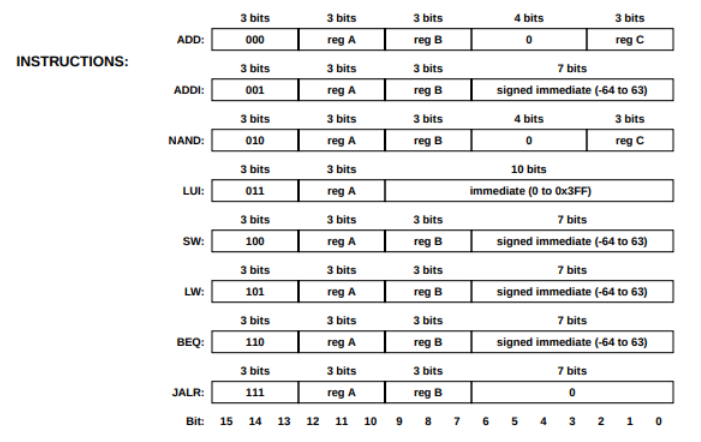RiSC stands for Ridiculously Simple Computer. It is an ISA used for teaching purposes, based on the Little Computer (LC-896) ISA developed by Peter Chen at the University of Michigan.
-
16-bit architecture
- 16 bit registers
- 16 bit ALU
- 16 bit Data bus
- 16 bit Address bus
-
8 registers
r0is always 0- All other registers
r1-r7are general purpose
-
Above 3 images are from the RiSC-16 ISA reference (in references)
The following naming convention is followed in the verilog code :
| Prefix | Meaning |
|---|---|
i_ |
Input port |
o_ |
Output port |
p_ |
Parameter (or localparam) |
r_ |
Register |
w_ |
Wire |
s_ |
State definitions (as localparam) |
The following legend is followed for all diagrams in the documents. (all diagrams were made using drawio)
-
Implementation of a simple non-pipelined version
-
RTL code written in verilog
-
Constrained random verification using system verilog
- Reference models of sub-components
- Testing by comparing results of reference model and RTL design using constrained random stimulus
-
Formal verification using symbiyosys
- Proved register file and data memory using k-induction and bmc
-
Documentation : ./single_cycle/readme.md
- Tools for RiSC-16 written in python
- Assembler
- Random instruction generator
- For documentation and usage, go to ./utils/readme.md

